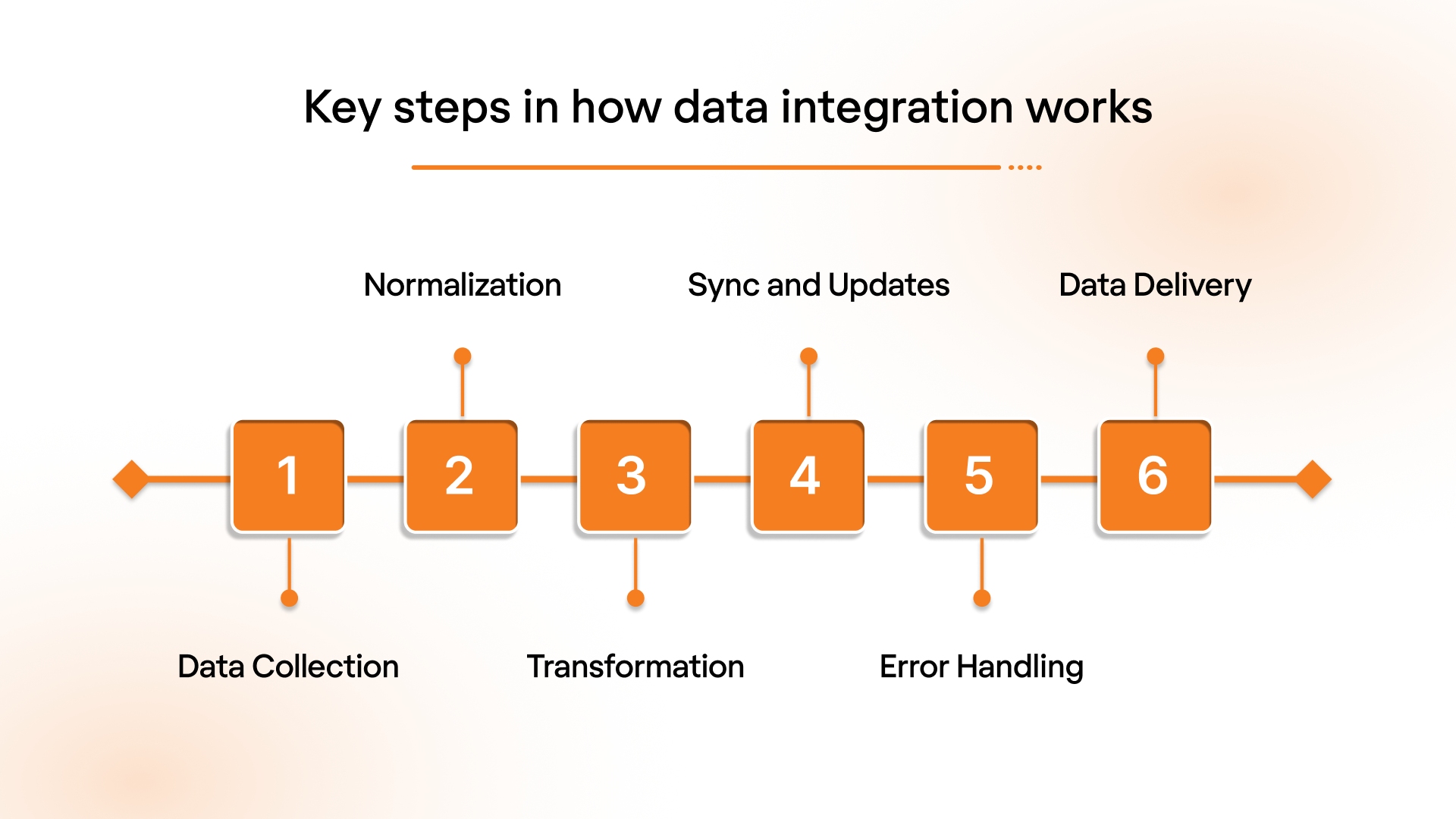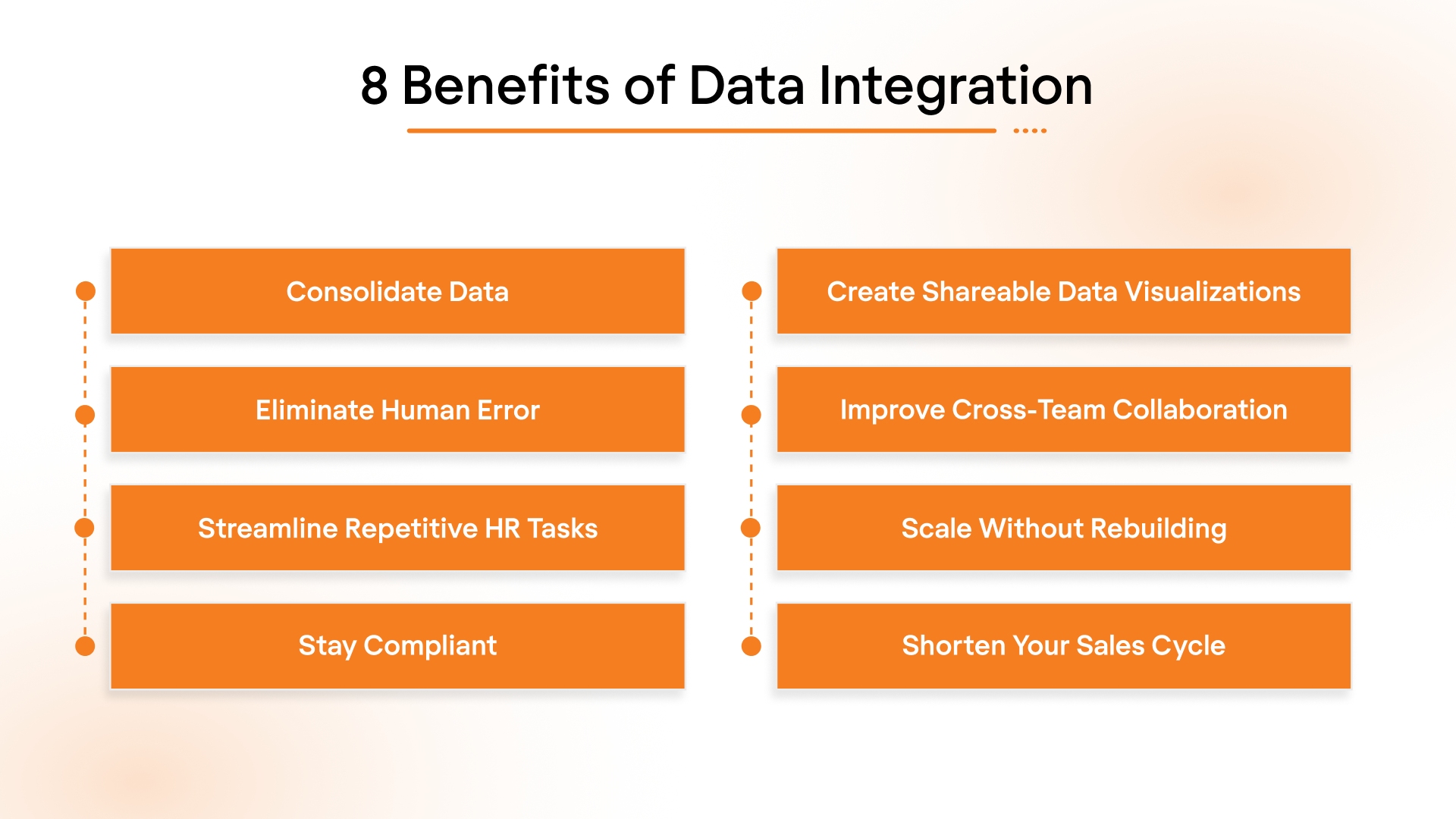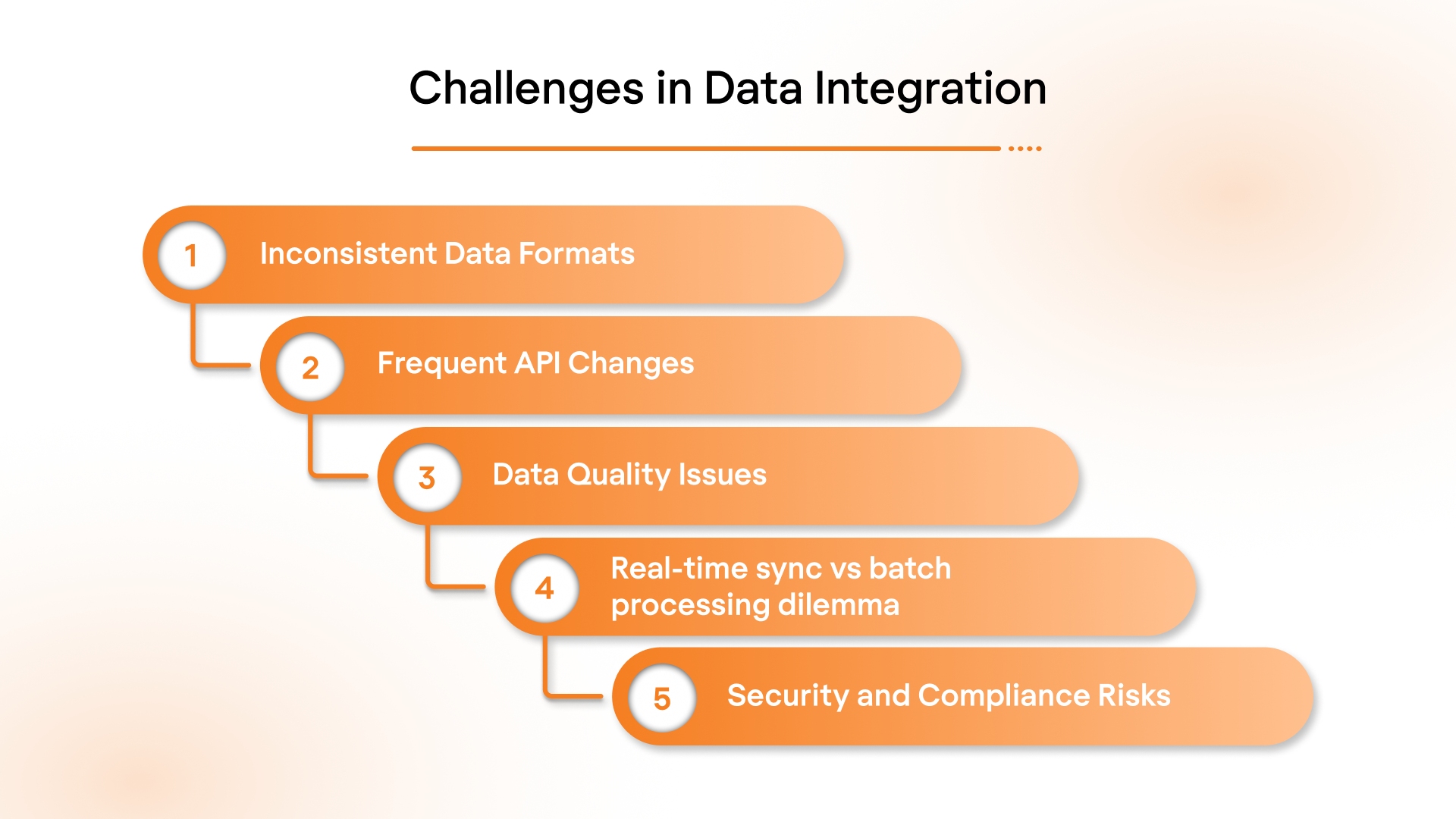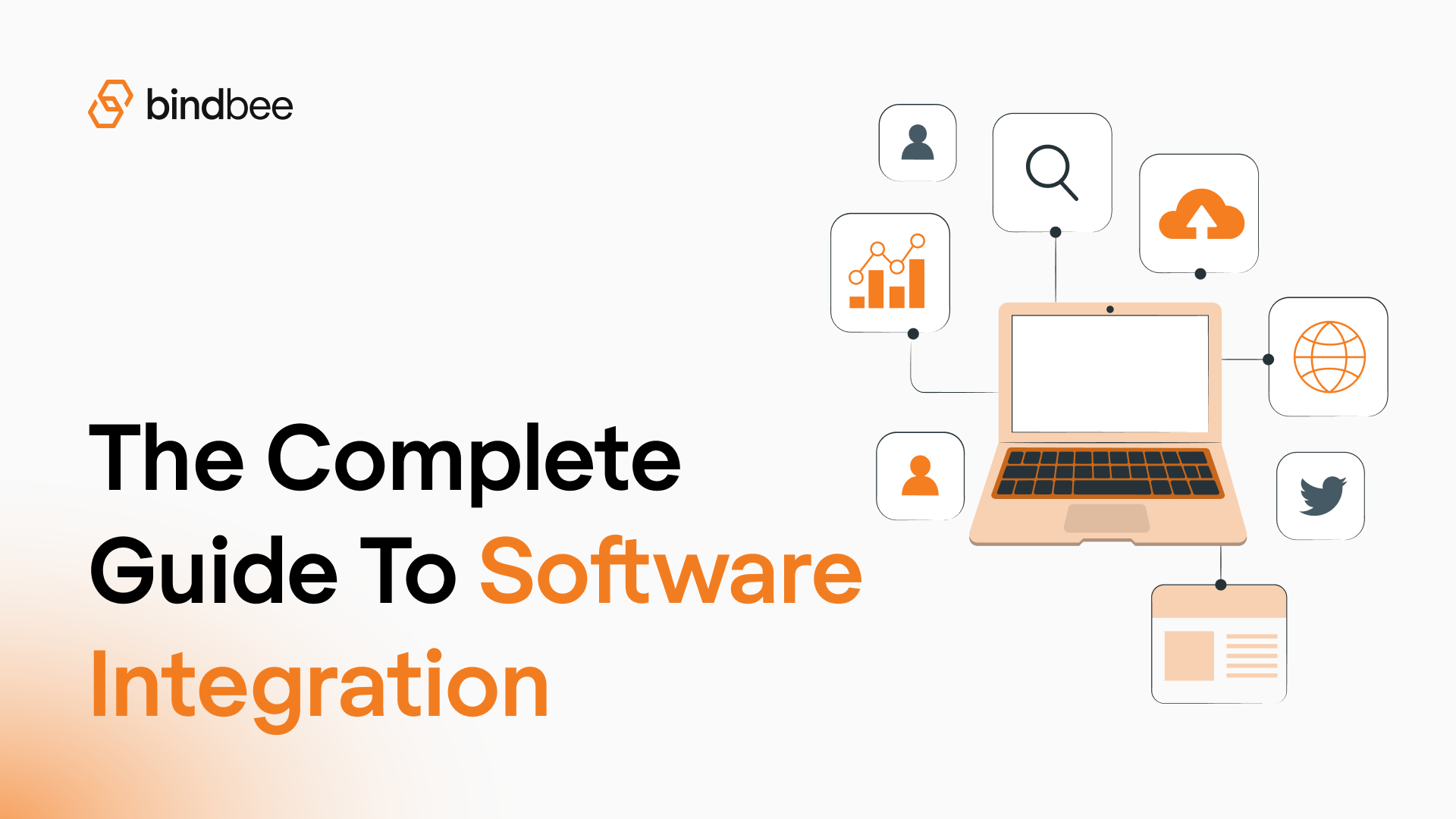What happens when your product has to handle employee data scattered across multiple HR systems?
For teams building HR Tech or benefits platforms, scattered HRIS, payroll, and ATS data often leads to delays, extra manual checks, and records that don’t line up. When every employer brings a different system, even simple tasks like updating rosters, calculating deductions, or processing contributions can turn messy and error-prone.
Are you also dealing with slow onboarding, missing fields, broken payroll files, or integrations that continuously drain engineering resources? This blog explains why data integration matters, the impact it has on accuracy and automation, and the key benefits it brings.
Key Takeaways
- Disconnected HR, payroll, and benefits systems slow down onboarding, increase errors, and drain engineering time.
- Data integration connects all systems into a single, reliable source of truth, reducing manual work and keeping information accurate.
- It helps automate repetitive HR tasks, improve compliance, and eliminate costly data mismatches across platforms.
- Integrated data speeds up employer onboarding, improves team collaboration, and shortens sales cycles.
- Common challenges include inconsistent data formats, frequent API changes, and compliance risks.
What is data integration?
Data integration brings information from different systems together into a single, consistent view. Instead of managing separate APIs, file feeds, or spreadsheets, your platform can pull clean, structured data from multiple sources automatically. This cuts down manual work, reduces errors, and speeds up workflows across onboarding, payroll, benefits, and compliance.
The need becomes bigger when each employer you serve uses a different HRIS, payroll, or ATS. Without reliable integration, your team gets stuck maintaining one-off connections, delaying onboarding and raising support load.
Here are the key steps in how data integration works:

- Data Collection: The system connects to multiple HR platforms through APIs, SFTP, or file uploads to pull employee and payroll data.
- Normalization: Collected data is mapped to a consistent, unified schema so that every field (such as employee ID, compensation, or deductions) follows the same structure.
- Transformation: The data is cleaned, formatted, and aligned with your platform data model, ensuring consistency across systems.
- Sync and Updates: Real-time Scheduled syncs and event-driven updates keep information current, handling changes such as new hires, terminations, role changes, or payroll adjustments.
- Error Handling and Monitoring: Automated retries, logging, and dashboards catch and fix sync issues before they impact your clients.
- Data Delivery: Clean, normalized data flows directly into your product workflows, ready for analytics, benefits tasks, payroll operations, or any automated process.
Now that you know what data integration means and how it works, let’s look at why it’s so important.
Why is Data Integration Important?
When your platform depends on employee, payroll, or benefits data, disconnected systems lead to delays, inaccuracies, and unnecessary operational load. Without reliable data integration, teams spend more time resolving sync issues instead of focusing on product improvements.
Here are some of the main reasons data integration is essential:
- It speeds up employer onboarding by eliminating manual file setup and data mapping.
- It reduces the time engineers spend building and maintaining individual HRIS or payroll connectors.
- It keeps employee rosters, job changes, and compensation data accurate and up to date.
- It prevents payroll errors caused by outdated or mismatched deduction data.
- It supports real-time updates for benefits eligibility, 401(k) contributions, and compliance.
- It helps close deals faster when buyers expect prebuilt integrations with their HR systems.
- It reduces support tickets by eliminating sync issues and reconciliation gaps.
- It gives product and operations teams better visibility through logs, alerts, and dependable automation.
If your platform needs a simpler way to work with employee data, payroll information, or benefits records, Bindbee offers a straightforward approach. It’s a U.S.-based unified API built for HR Tech and benefits companies, offering prebuilt integrations with leading HRIS, payroll, and ATS systems. With us, you connect once and instantly access multiple systems, saving engineering time and keeping your data accurate and consistent.
Now that you understand why data integration is essential for keeping your systems connected and accurate, let’s look at the key benefits it brings to your operations.
Also Read: What Is Two-Way Sync? How It Keeps Your Data Accurate Across Systems
8 Benefits of Data Integration
When you’re working across multiple HR, payroll, and benefits systems, disconnected data slows everything down. A strong integration approach streamlines your operations, cuts manual tasks, and gives teams the clarity they need to move quickly.
Here are 8 benefits of getting data integration right:

1. Consolidate Data
If every employer you serve uses a different HRIS or payroll system, data ends up scattered across multiple sources. Integration pulls everything into a single, unified view so your platform relies on one consistent source.
This means no more manually merging employee records or payroll files. Consolidation improves reporting, strengthens data syncs, and keeps workflows running smoothly.
2. Eliminate Human Error
Manual data handling, like importing spreadsheets or retyping payroll fields, often leads to mistakes. An incorrect date or a missing deduction field can trigger failed contributions, support tickets, or, worse, compliance issues.
Data integration removes manual steps by automating the flow of accurate data between systems. You get cleaner inputs, which lead to more stable outputs in payroll, benefits, and retirement workflows.
3. Streamline Repetitive HR Tasks
Manually tracking leave balances, validating employment status, or reconciling deductions takes time and grows harder as you scale. Ops teams shouldn’t be maintaining endless spreadsheets.
Integrated data allows these workflows to run automatically. It saves time, reduces bottlenecks during employer onboarding, and supports complex payroll setups without extra manual work.
4. Stay Compliant
HR and benefits data are tightly regulated by HIPAA, ERISA, IRS rules, and more. When your data is out of sync or incomplete, you’re exposed to compliance risk.
Integration helps you track required fields, maintain audit trails, and keep records consistent. It simplifies regulatory checks and supports clean, verifiable data during audits.
5. Create Shareable Data Visualizations
Leadership teams need visibility into metrics like enrollment trends, contribution patterns, and platform usage. If the data sits in disconnected systems, reporting becomes slow and labor-heavy.
With integrated data, you can build dashboards that stay current and easy to share. Teams and clients gain insights without relying on manual exports.
6. Improve Cross-Team Collaboration
If product, ops, and support teams work from different versions of the same data, issues take longer to diagnose and resolve.
Integration gives everyone access to the same accurate information. This speeds up decision-making, reduces back-and-forth communication, and improves coordination across your organization.
7. Scale Without Rebuilding
As your platform grows, you’ll support more systems and more use cases. Point-to-point integrations turn into major blockers as the number of connections increases.
A unified data integration layer gives you a scalable foundation. You can onboard new employers and vendors without recreating your backend or multiplying engineering effort.
8. Shorten Your Sales Cycle
Prospects often ask whether you support their HRIS, payroll, or benefits system before they even agree to a demo. If you don’t have the right integrations in place, deals slow down or stall entirely, especially with larger employers.
With strong data integration, your sales team can confidently say “yes” to system requirements and show real workflows during trials. This speeds up technical validation, removes common objections, and helps you close opportunities faster.
While data integration brings clear advantages for HR Tech and benefits platforms, it’s not without its hurdles. Understanding these challenges helps you plan better and avoid common issues when connecting multiple systems.
Challenges in Data Integration
Even with modern tools, connecting multiple HRIS, payroll, and ATS systems isn’t simple. Each platform uses its own data structure, API behavior, and update pattern, which creates extra work for engineering and slows down product delivery. Without a solid integration framework, these issues add up and turn into an ongoing load on your team.
Here are some common challenges you may face:

- Inconsistent Data Formats: Every HR or payroll system structures data differently, so mapping fields like compensation or deductions can be time-consuming and error-prone.
- Frequent API Changes: Vendors often update or modify their APIs, breaking existing connections and forcing your team to rework code to keep data integrations stable.
- Data Quality Issues: Incomplete or inconsistent records, like missing start dates or incorrect pay groups, can cause errors in payroll, benefits, or compliance workflows.
- Real-time sync vs batch processing dilemma: Some workflows require instant updates (job changes, deductions, contributions) while others are still batch-oriented, which creates sync complexity.
- Security and Compliance Risks: HR and payroll data are highly sensitive, and weak safeguards around encryption, logging, access control, or storage can create exposure risks.
Overcoming these challenges requires the right technology and approach. That’s exactly where Bindbee makes the difference.
Also Read: 11 Common Integration Challenges And How to Overcome Them
How Bindbee Simplifies Data Integration
Bindbee is a U.S.-based unified API platform built specifically for HR Tech and benefits companies, enabling you to connect once and access dozens of HRIS, ATS, and payroll systems without building and maintaining each connector yourself.
Here are the ways Bindbee helps simplify data integration for you:
1. Single Unified Connection
Instead of creating separate integrations for each vendor, you can connect to a single API that integrates with 40+ HR, payroll, and ATS systems. This cuts down engineering time spent on connectors and frees your team to focus on core product needs.
2. Deep, Consistent Data Models
We normalize data across integrations (employees, compensation, payroll runs, time-off, etc.) so you get a consistent schema regardless of vendor. This consistency reduces mapping errors, simplifies codebase logic, and improves data accuracy for benefits, payroll, and retirement use cases.
3. Real-Time Sync & Monitoring Tools
With real-time updates and built-in tools like logs, dashboards, and automated retries, we help you monitor integration health and resolve data issues proactively. Ops and integration teams spend less time reacting to failures and more time improving processes.
4. Pre-built Mappings & Embed-Ready UX
Bindbee includes ready mappings and an embeddable connection flow that employers can use without heavy setup. This shortens onboarding, reduces back-and-forth configuration work, and supports sales cycles where integrations matter.
5. Compliance & Security by Design
We support compliance requirements, including HIPAA, SOC 2, and ISO 27001, and offer audit-ready logs. This means you can claim enterprise-grade integration infrastructure and reduce risk when handling sensitive workforce and payroll data.
6. Scalability Without Rebuilding
Since you build once and connect to many systems, you don’t need to create new connectors as you add customers or expand into new HRIS or payroll ecosystems. Your engineering load stays manageable even as your platform grows.
Conclusion
Data integration is a core requirement for building fast, reliable, and scalable HR platforms. When your product depends on payroll, employee, or eligibility data, disconnected systems lead to delays, manual work, and costly errors. Strong data integration helps you onboard employers faster, reduce support volume, and unlock operational efficiency across teams.
If you're spending too much time building and fixing one-off integrations, Bindbee can help you shift that burden. Bindbee is a unified API platform built for HRIS, ATS, and payroll connectivity. With prebuilt integrations, deep data models, real-time syncing, and built-in monitoring tools, we simplify everything to get reliable data.
So, why wait? Book a demo today to see how Bindbee can simplify your data integration!
FAQs
1. Can data integration reduce costs?
Yes. By automating manual data flows, reducing redundant systems, and eliminating manual reconciliation work, you can lower IT and operational costs.
2. What are the risks if data integration is done poorly?
Poor integration leads to data silos, mismatched fields, inconsistent data, slower workflows, increased support burden, and higher compliance risk.
3. Is data integration a one-time project?
No. It must be an ongoing process because systems change, new data sources appear, and vendors update APIs, so maintenance is key.





.jpg)

.jpg)





